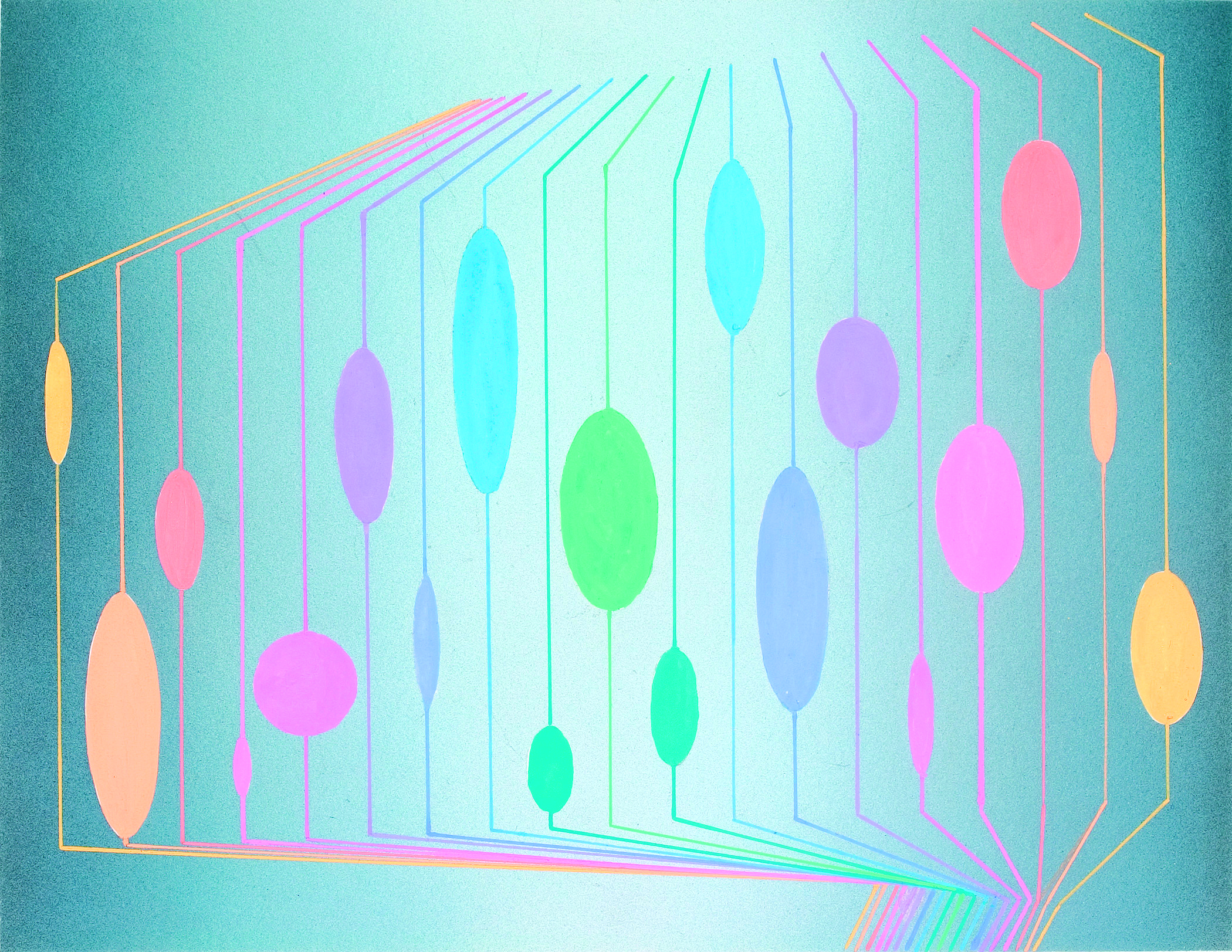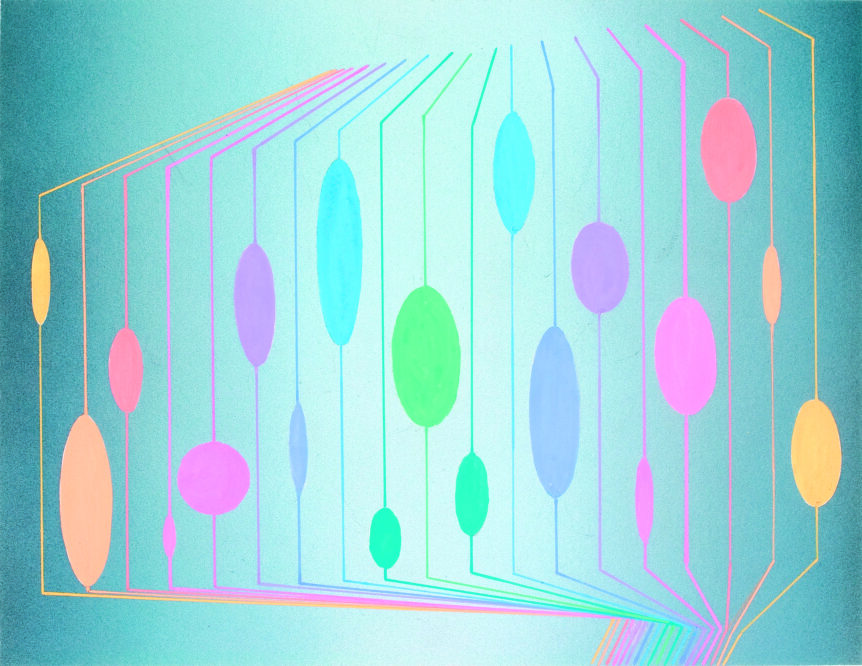
Symphony #2 by Horace Pierce (1916–1958), 1949–1952. Albuquerque Museum, New Mexico, purchase, 1992 General Obligation Bonds; photograph courtesy of the Los Angeles County Museum of Art.
Everyone is familiar with mid-century New York’s abstract expressionist scene; less so, perhaps, with the Transcendental Painting Group of the American Southwest, which was making forays beyond figuration at around the same time. Another World, the first exhibition to showcase the work of the group outside of New Mexico, will go on view at the Los Angeles County Museum of Art this winter to conclude its five-museum tour across the country. Founded by painters Raymond Jonson and Emil Bisttram in 1938, the Transcendental Painting Group drew on Jungian psychoanalysis, Zen Buddhism, Theosophy, and other esoteric bodies of knowledge and traditions in order to, according to the group’s manifesto, “carry painting beyond the appearance of the physical world through new concepts of space, light and design, upon planes that are termed idealistic and spiritual.” Approaches varied. Bisttram, who taught members of the group at his Taos School of Art, combined a cosmic egg form with what looks like the Egyptian ankh cross (a symbol of life) in his painting Oversoul using superimposition, one of the seven techniques he encouraged his students to use when making abstract works of art. During a tragically short career, one of those students, Horace Pierce, based two series of abstract drawings on Dynamic Symmetry, a theory of proportions derived from ancient Greek artifacts. With its music-inspired title and rhythm of lines, shapes, and colors, his Symphony #2 followed in the tradition of pioneering abstractionists like Mondrian, who aspired to paint as if improvising a jazz solo. Jonson, who was strongly influenced by Wassily Kandinsky’s conception of art as a spiritual pursuit, took up the air- brush to complete works such as Oil No. 2. By so doing he hoped to efface the artist’s hand, as well as any connection to the material world of “strife, pain and greed.”
Although they contrived to rise above expressive limitations imposed by figurative artmaking, the painters of the Transcendental Painting Group were brought back to earth, so to speak, by the light and landscape of the Southwest, a genius loci that had bewitched many artists before them, from Timothy O’Sullivan to Georgia O’Keeffe. In canvases such as Winter and Birthday, Agnes Pelton, perhaps the most famous painter of the group, transfigured the radiant desert light of the natural world into a metaphorical light that illuminates, she said, “not as it plays on objects in the natural world, but through the space and forms, seen on the inner field of vision.”
Another World: The Transcendental Painting Group, 1938–1945 • Los Angeles County Museum of Art • December 18 to June 19, 2023 • lacma.org

